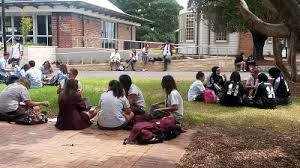After years of decline, school attendance rises across Western Plains
Luke Williams
22 March 2024, 2:40 AM
 Brewarrina Central School. Image: NSW Department of Infrastructure.
Brewarrina Central School. Image: NSW Department of Infrastructure. After years of a devastating decline in school attendance with several schools dipping below 50% attendance, Western Plains schools have a found a way to get students regularly coming back.
Between 2018 and 2022 department figures show significant drops in several schools including Brewarrina Central School which fell from 44% in attending in 90% of the time in 2018 to just 8% in term 3 2022.
Coonamble High School slipped from 40% to 15%. Gilgandra High School went from 48 to 18%. While Narromine High School went from 51 to 30%.
Even compared with 2021 regular attendance rates fell - Lighting Ridge Central School fell from 37% in 2021 to 19% in 2022 and Cobar Public School from 50 to 30%.
However, nearly all the schools in the region appear to have reversed the trend when comparing semester 3, 2022 attendance levels with those from semester 3, 2023.
Walgett (36 to 42%), Coonamble (63 to 66%) and Coonabarabran (75 to 77) high schools saw significant improvements in attendance.

Image: International Education News.
The number attending 90% or more of the time doubled at Brewarrina Central School as well as Walgett high school.
Nyngan, Gilgandra and Coonabarabran high schools had the highest attendance for high schools in the region.
Nyngan as well as Narromine and Lightning Ridge schools also had jumps in the number of students attending 90% or more of the time.
It comes as the NSW Education Department shows that student attendance in NSW public schools increased from 85.2% in 2022 to 88.1% in 2023 – a nation-leading improvement of 2.9%.
The promising result coincides with the NSW Department of Education 'Every Day Matters' campaign, which aims to raise parent, carer and community awareness on the importance of school attendance.

Nyngan High School. Image: NSW Government
The State’s Government has now launched a new phase of its campaign to remind parents and carers that just one day off school can lead to students missing out and falling behind, academically and socially.
Students’ have been declining nation-wide since the COVID-19 lockdowns in 2020, with estimates showing that chronic absenteeism levels in schools reached 49.9% in 2022, with between 1% to 5% of all students classed as severely absent.
Studies show that the prevalence of students who refuse to attend school is higher amongst those with autism spectrum and Attention-Deficit/Hyperactivity Disorder (ADHD). However, bullying and student disconnection from the learning curriculum may also be contributing to increased absences, academics have noted.

PHOTO: NSW Education minister Prue Car. Image: NSW Labor Party.
Conversely, research shows positive school attendance benefits students’ academic achievement, engagement and wellbeing, while students who attend school regularly are also more likely to experience positive health, social and economic outcomes after leaving school.
“A day or two away from school may not seem like a big deal, but missing just one day per fortnight adds up to an entire year of missed learning over a student’s school career,” Deputy Premier and NSW Education Minister Prue Car said.
“We have made good progress on lifting attendance in NSW since coming to government, but there is more to do. Unless your child is unwell, please send them to school. It’s the best thing you can do to ensure your child receives the best education possible.”



